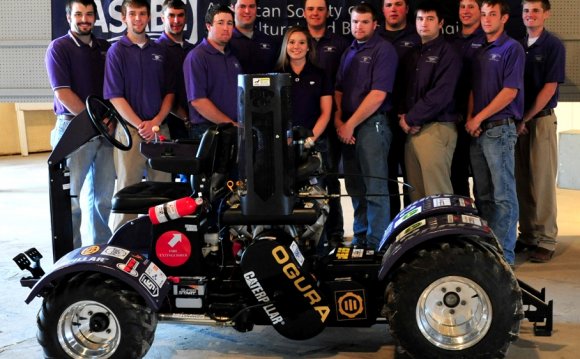
| 2016 Impact Factor | Available summer 2017 |
|---|---|
| 2014 / 2015 Impact Factor | 0.895 |
| 2013 Impact Factor | 0.843 |
| 2012 Impact Factor | 0.974 |
| 2011 Impact Factor | 1.033 |
Impact factor over time
Impact factor
Year
Additional details
| 5-year impact | 1.17 |
|---|---|
| Cited half-life | 10.0 |
| Immediacy index | 0.18 |
| Eigenfactor | 0.01 |
| Article influence | 0.37 |
| ISSN | 2151-0032 |
Publications in this journal
- [Hide abstract]
ABSTRACT: A simple, direct, and easily adaptable analytical approach was developed for the hydraulic design of micro-irrigation paired laterals laid on uniformly sloping ground based on the locations where the same average emitter pressure head exists in the uphill and downhill laterals. Analytical expressions of the best manifold position, inlet working pressure head, maximum pressure difference, and water application uniformity of the paired laterals were separately developed using the energy gradient line method. All equations of the design parameters were regression analyzed by the numerical fitting technique with the specific velocity exponent and the pressure loss ratio of a single downhill lateral with the same length as the paired laterals. When the length, diameter, and designed emitter flow were given, the best manifold position and other parameters of the paired laterals could be directly designed without using iterative methods. When the designed emitter flow, water application uniformity criterion, and one parameter (either diameter or length) were provided, the other parameter, best manifold position, and the remaining parameters of the paired laterals could be easily determined by Equation Solver in Microsoft Excel. A comparison test with three numerical design examples covering various conditions indicated that the proposed approach could produce accurate results for practical purposes. By using the developed analytical expressions and regression relationships, the proposed approach provided a simpler and more adaptable design procedure than the traditional analytical methods. The proposed procedure is preferred to the numerical techniques, which need large amounts of execution time and complex computer operations. The proposed procedure also provided the chance to evaluate the influence of local energy losses on the hydraulic designs of paired laterals for a given uniformity level. - [Hide abstract]
ABSTRACT: Raman spectroscopy technique has proven to be a reliable method for detection of chemical contaminants in food ingredients and products. To detect each contaminant particle in a food sample, it is important to determine the effective depth of penetration of laser through the food sample and the corresponding laser intensity required for the penetration. It is also important to determine effective spatial resolution needed to detect each contaminant particle in the mixture. This study examined the depth of penetration of a 785nm laser through tapioca starch and wheat flour when using three different laser intensities. Melamine, known to exhibit identifiable Raman spectral peaks, was selected as a subsurface reference material for determining the depth of laser penetration through the food powder samples. The food powders were layered in 5 depths between 1 and 5 mm overtop a Petri dish packed with melamine. It was observed that the 785nm laser could penetrate to 3mm depth in starch; however, the penetration depth was limited to 2mm in flour. These depths were achieved using laser intensity of 200mw and 100mw for starch and flour, respectively. The selected depth and laser intensity parameters were next used to examine the effective spatial resolution required for detection of maleic acid in starch and benzoyl peroxide in flour, which was selected to be 0.5 mm. Finally, an experiment was conducted to demonstrate the use of these parameters for quantitative Raman imaging-based detection of these contaminants prepared in mixtures at 0.1%, 0.3%, and 0.5% (w/w) concentrations. - [Hide abstract]
ABSTRACT: Mechanization is essential in modern agriculture. The tractor is one of the machines responsible for the agricultural progress observed in the second half of the twentieth century. The improvement and reliability of these machines has allowed for an industrial revolution, facilitating the clearing of large areas of native vegetation and the economic expansion of the production of agribusiness commodities. However, tractor efficiency, as well as the occurrence of accidents, depends partly on the level of operator fatigue. Of all the ergonomic factors affecting the operator of the machine, noise and vibration are the most important, but few studies have evaluated these parameters and their implications for occupational health. This study aims to evaluate the levels of vibration and noise emitted by agricultural tractors of different power ratings and to compare the results with existing regulations in Brazil. The tractors studied were as follows: tractor A (engine power of 63 kW (86 cv) at 2200 rpm, manufactured in 2005, 4050.5 h of operation), tractor B (engine power of 88 kW (120 cv) at 2200 rpm, manufactured in 2005, 3800.0 h of operation), tractor C (engine power of 127 kW (173 cv) at 2200 rpm, manufactured in 1997, 7472.9 h of operation), and tractor D (engine power of 81 kW (110 cv) at 2200 rpm, manufactured in 2011, 907 h of operation). For all four tractors, the noise levels were above the recommended values, while the vibration levels were typically below the limits established for 8 h of work at frequencies of 5 to 10 Hz. Furthermore, the level of vibration was strongly related to the seat structure of the tractor, which can efficiently cushion impacts on both asphalt pavement and firm ground - [Hide abstract]
ABSTRACT: In fermentation processes, it is typically assumed, but seldom justified, that the off-gas composition is an adequate indicator of the dissolved gas concentrations to which the microbes are exposed. The objective of this study was to measure dissolved gas concentrations and assess the impact of elevated H-2(aq) and CO2(aq) (due to mass transfer limitations) on carbon balances, electron balances, and metabolic flux during thermophlilic fermentation with Clostridium thermocellum. A membrane inlet mass spectrometer (MIMS) was used for direct on-line measurement of dissolved gases (H-2 and CO2) during fermentation of cellobiose in a bioreactor sparged with N-2 gas. Two conditions were evaluated: (1) 10 mL min(-1) N-2 sparging, 100 rpm mixing, no surface mixing, and a corresponding Reynolds number (Re) of 12, 000; and (2) 100 mL min(-1) N-2 sparging, 200 rpm mixing, surface mixing, and a corresponding Re of 23, 000...
Source: www.researchgate.net

 The College of Engineering at Michigan State University (MSU) is made up of 6 departments with 168 faculty members, nearly 3,000 undergraduate students, 9 undergraduate B.S. degree programs and a wide spectrum of graduate programs in both M.S. and Ph.D. levels. Each...
The College of Engineering at Michigan State University (MSU) is made up of 6 departments with 168 faculty members, nearly 3,000 undergraduate students, 9 undergraduate B.S. degree programs and a wide spectrum of graduate programs in both M.S. and Ph.D. levels. Each...
 Shelbyville is a city in Shelby County, Illinois, along the Kaskaskia River. As of the 2010 census, the population was at 4700. It is the county seat of Shelby County. Shelby Memorial Hospital, located in town, is the county's only hospital.
Shelbyville is a city in Shelby County, Illinois, along the Kaskaskia River. As of the 2010 census, the population was at 4700. It is the county seat of Shelby County. Shelby Memorial Hospital, located in town, is the county's only hospital.







